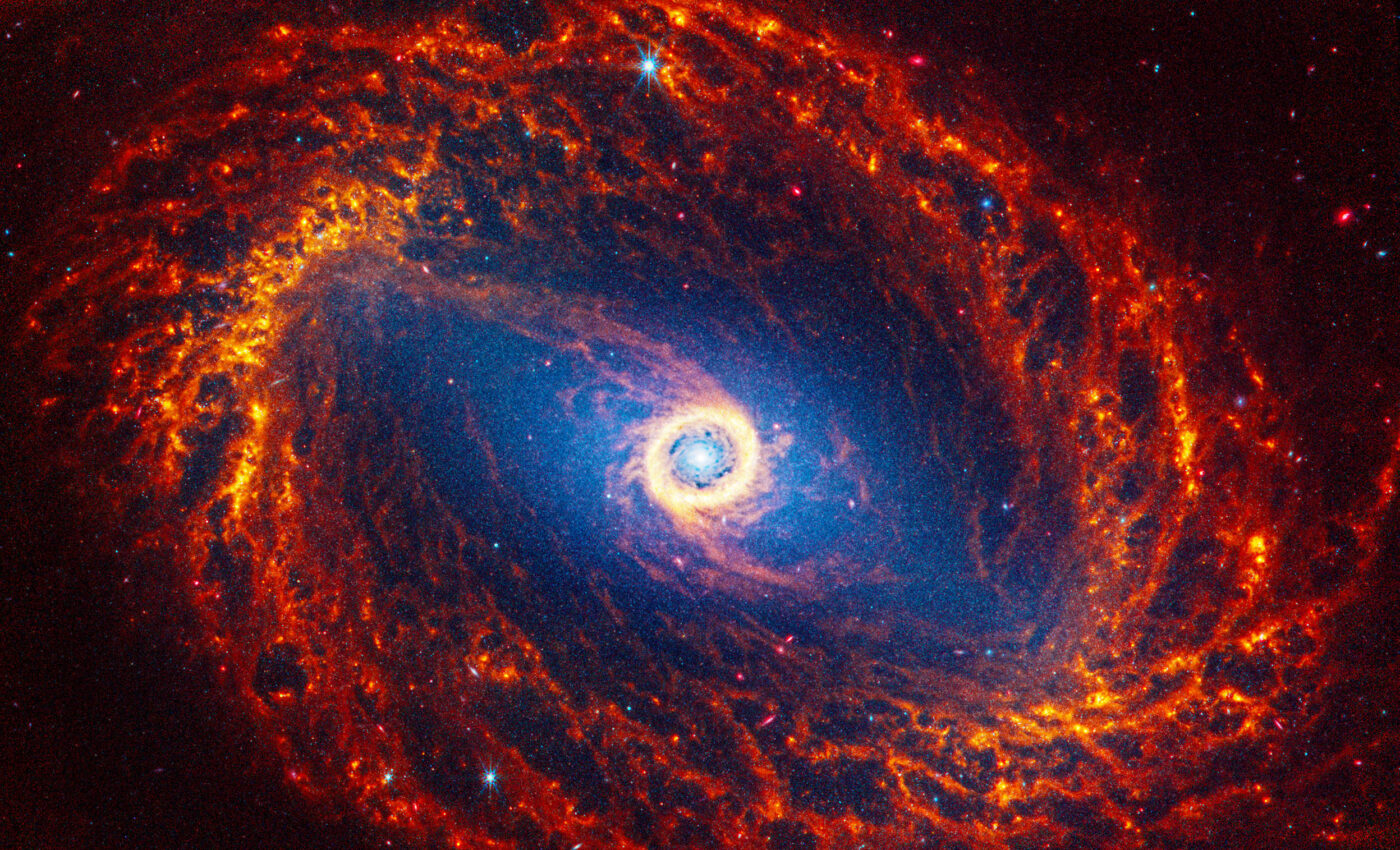
The mesmerizing beauty of spiral galaxies
The universe is a tapestry of wonders, and the spiral galaxies, with their arms teeming with stars, are among its most enchanting mysteries.
At the heart of these cosmic swirls lie ancient star clusters and, occasionally, the enigmatic supermassive black holes.
It is here that NASA’s James Webb Space Telescope (JWST) excels, capturing breathtaking scenes of nearby galaxies in a blend of near- and mid-infrared light.
The PHANGS program: A cosmic endeavor
These images are part of the ambitious and long-term project known as the Physics at High Angular resolution in Nearby GalaxieS (PHANGS).
This program is a global effort, backed by over 150 astronomers. Prior to the JWST, the PHANGS project had already amassed a wealth of data from other telescopes, covering ultraviolet, visible, and radio light.
The addition of JWST’s near- and mid-infrared data brings new dimensions to our understanding of galaxies.
“Webb’s new images are extraordinary,” said Janice Lee, a project scientist for strategic initiatives at the Space Telescope Science Institute in Baltimore.
“They’re mind-blowing even for researchers who have studied these same galaxies for decades. Bubbles and filaments are resolved down to the smallest scales ever observed, and tell a story about the star formation cycle,” Lee added.
Thomas Williams, a researcher from the University of Oxford, shared the team’s excitement, “I feel like our team lives in a constant state of being overwhelmed — in a positive way — by the amount of detail in these images.”
Stars and dust of creation in spiral galaxies
JWST’s Near-Infrared Camera (NIRCam) has captured images of millions of stars, shimmering in hues of blue, scattered across the galaxies or clustered in groups.
Meanwhile, the Mid-Infrared Instrument (MIRI) has shed light on glowing dust and nascent stars, still shrouded in the gas and dust that fuel their formation.
“These are where we can find the newest, most massive stars in the galaxies,” noted Erik Rosolowsky from the University of Alberta.
Astonishingly, JWST’s images have also revealed large, spherical shells in the gas and dust of these galaxies.
Adam Leroy from Ohio State University explains, “These holes may have been created by one or more stars that exploded, carving out giant holes in the interstellar material.”
Deciphering the patterns of star formation
By tracing the spiral arms, astronomers have discovered extended regions of gas, glowing in red and orange.
These patterns, as Rosolowsky elaborates, are like cosmic waves, offering clues about how galaxies distribute gas and dust, vital for understanding the processes of star formation.
“These structures tend to follow the same pattern in certain parts of the galaxies,” Rosolowsky added. “We think of these like waves, and their spacing tells us a lot about how a galaxy distributes its gas and dust.”
It appears galaxies grow from the inside out. Star formation begins at the core and spirals outward.
Stars farther from the core tend to be younger, while those near the core are older, illuminated in a blue glow.
“That’s a clear sign that there may be an active supermassive black hole,” said Eva Schinnerer, a staff scientist at the Max Planck Institute for Astronomy in Heidelberg, Germany.
“Or, the star clusters toward the center are so bright that they have saturated that area of the image.”
Unlocking the secrets of spiral galaxies
The PHANGS team, alongside releasing these images, has also unveiled the largest catalog of approximately 100,000 star clusters.
This opens up new research avenues, allowing scientists to more accurately study star life cycles.
“The amount of analysis that can be done with these images is vastly larger than anything our team could possibly handle,” Rosolowsky emphasized.
“We’re excited to support the community so all researchers can contribute.”
Implications and future research
In summary, the James Webb Space Telescope has revolutionized our view of the cosmos, offering unprecedented insights into the intricate structures of nearby galaxies.
Its contribution to the PHANGS project, through capturing millions of stars and revealing new aspects of star formation and galactic evolution, has deepened our understanding of the universe and set the stage for a new era of astronomical research.
This collaborative effort, involving astronomers from around the globe, underscores the JWST’s role as a pivotal tool in unveiling the universe’s grandeur and complexity, fostering a deeper appreciation and curiosity about our place in the cosmos.
See all of the 19 individual spiral galaxies on the James Webb Space Telescope website.
—–
Like what you read? Subscribe to our newsletter for engaging articles, exclusive content, and the latest updates.
—–
Check us out on EarthSnap, a free app brought to you by Eric Ralls and Earth.com.
—–













